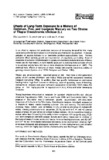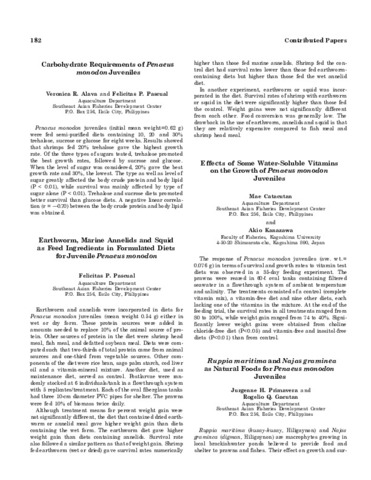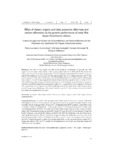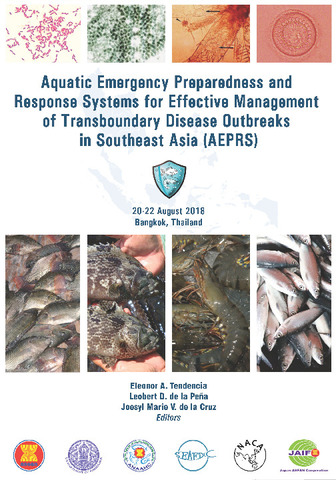Effects of long-term exposure to a mixture of cadmium, zinc, and inorganic mercury on two strains of tilapia Oreochromis niloticus (L.)
- Global styles
- MLA
- Vancouver
- Elsevier - Harvard
- APA
- Help
Share
Abstract
Tilapia are an economically important group of fish. They have a short generation period of 3-6 months, and exhibit successive breeding. In addition, their fast growth, herbivorous or omnivorous feeding habits, high food conversion efficiency, ease of spawning, ease of handling, resistance to disease and good consumer acceptance make this group of fish highly popular in aquaculture in Asia, Africa and other developing countries. Tilapia have been the subject of research on pollution effects over the last decade. The purpose of this study was to determine growth, accumulation and depuration responses of 2 strains of the Nile tilapia, Oreochromis niloticus, chronically exposed to a mixture of heavy metals including cadmium, zinc and mercury.
Suggested Citation
Cuvin-Aralar, M. L. A., & Aralar, E. V. (1993). Effects of long-term exposure to a mixture of cadmium, zinc, and inorganic mercury on two strains of tilapia Oreochromis niloticus (L.). Bulletin of Environmental Contamination and Toxicology , 50(6), 891-897. https://doi.org/10.1007/BF00209955
Type
ArticleISSN
0007-4861Koleksi
- Journal Articles [1258]
Related items
Showing items related by title, author, creator and subject.
-
Effects of some water-soluble vitamins on the growth of Penaeus monodon juveniles
Catacutan, M.; Kanazawa, A. (Aquaculture Department, Southeast Asian Fisheries Development Center, 1985)The response of Penaeus monodon juveniles (ave. wt.= 0.076 g) in terms of survival and growth rates to vitamin test diets was observed in a 35-day feeding experiment. The prawns were reared in 60-ℓ oval tanks containing ... -
Effect of dietary organic acid salts, potassium diformate and sodium diformate on the growth performance of male Nile tilapia Oreochromis niloticus
Cuvin-Aralar, Maria Lourdes A.; Luckstaedt, Christian; Schroeder, K.; Kühlmann, Kai-Jens (Verlag Natur & Wissenschaft, 2011)The effect of two organic acid salts on the production performance of juvenile male Nile tilapia Oreochromis niloticus were studied in two separate experiments. In the first trial the fish (initial size: 7.84kg) were fed ... -
Aquatic emergency preparedness and response systems for effective management of transboundary disease outbreaks in Southeast Asia: Proceedings of ASEAN Regional Technical Consultation, 20-22 August 2018, Centara Grand Central Ladprao, Bangkok, Thailand
Tendencia, Eleonor A.; de la Peña, Leobert D.; de la Cruz, Joesyl Marie V. (Aquaculture Department, Southeast Asian Fisheries Development Center, 2019)





